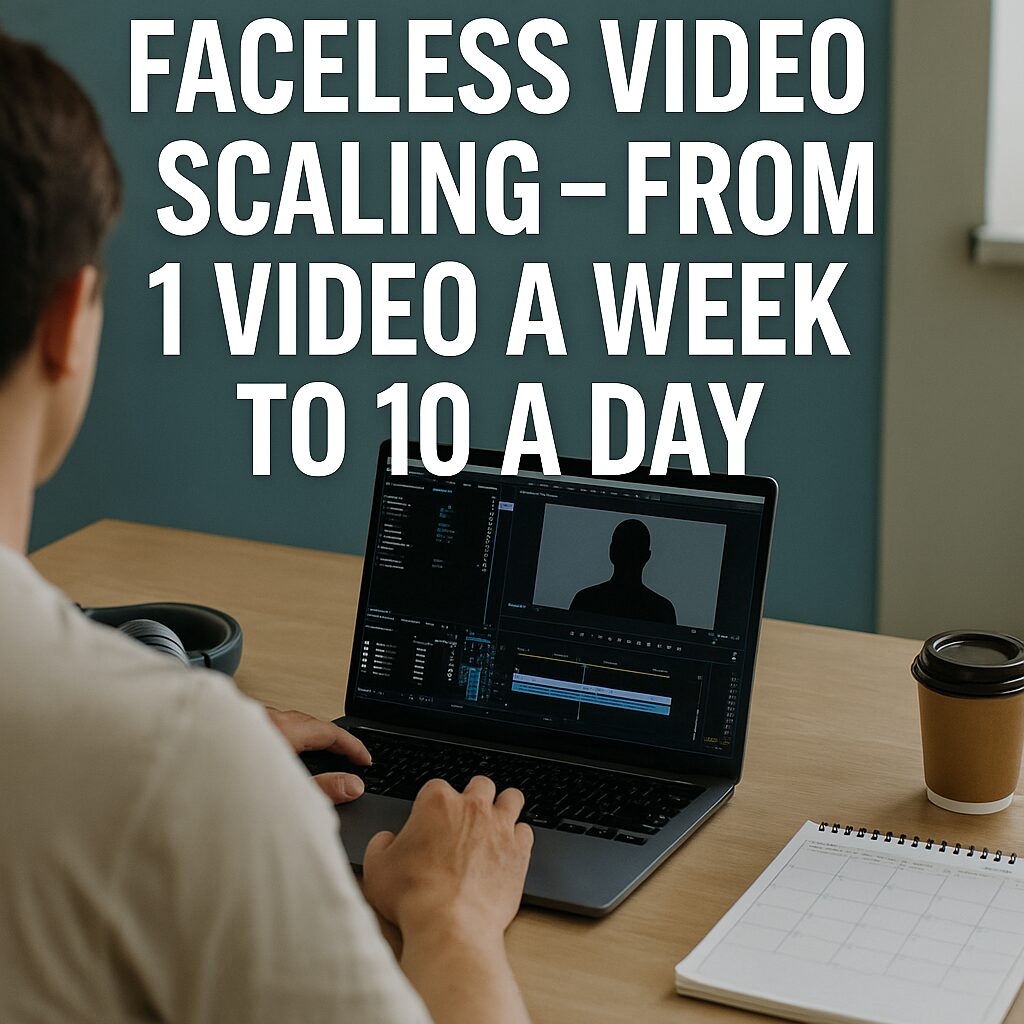If you’re already making faceless videos, you’re probably asking:
“How can I make more without burning out?”
This is where smart scaling comes in.
1. The Truth About Scaling Content
Scaling isn’t just about working harder — it’s about working smarter.
Most people think they need more time or energy. But what they really need is:
- A better system
- Batch production
- Reuse of content across platforms
Let’s break it all down.
2. Set a Weekly Video Goal
Start with a realistic but ambitious goal:
- If you’re doing 1 video/week now → Try 3
- If you’re at 3 → Try 7
- Advanced creators? Try 10/day, but only with systems in place.
Why this works: You need a target to build a system around.
3. Batch Like a Factory
Batching = Doing the same type of task in one block.
Here’s how a week could look:
- Monday: Script writing for 10 videos
- Tuesday: Voice recording or AI voice generation
- Wednesday: Video editing
- Thursday: Thumbnail creation + upload
- Friday: Schedule & SEO optimization
- Weekend: Analyze data, reply to comments, plan next week
This way, you avoid jumping between tasks. Your brain stays in one mode.
4. Use Templates and Automation Tools
Templates save time. Automation saves your life.
What you can automate:
- AI voice tools like ElevenLabs or Play.ht
- Video editing presets (CapCut templates, Premiere macros)
- Thumbnail templates (Canva)
- Publishing (Use schedulers: YouTube Studio, Buffer, Later)
Make your channel run like a factory.
5. Repurpose Content for Maximum Reach
Don’t stop with YouTube. Repurpose your videos into:
- Shorts (vertical cuts of longer content)
- Instagram Reels
- TikTok
- Pinterest Pins (use your thumbnail + quote text)
- Blog posts (turn scripts into articles)
One video idea = 5+ pieces of content.
6. Build a Faceless Video SOP (Standard Operating Procedure)
If you want to scale, act like a business.
Create an SOP (Google Doc or Notion is fine) that covers:
- Niche research steps
- Script structure
- Editing flow
- Thumbnail style
- SEO checklist
- Weekly publishing schedule
This makes it easier to outsource later or hand off tasks to a team.
7. Delegate or Outsource (Optional but Powerful)
Once your system is solid, consider hiring:
- Scriptwriters
- Video editors
- Thumbnail designers
- Virtual assistants for uploads & scheduling
Websites like Fiverr, Upwork, and OnlineJobs.ph are great for this.
8. Don’t Forget Analytics
Check your numbers weekly:
- Click-through rate (CTR)
- Watch time
- Top-performing topics
- Audience retention
Use that data to improve your scripts and thumbnails.
Final Tip: Scale at Your Own Pace
Scaling is powerful — but don’t rush.
Make sure quality stays high, even as quantity grows.
This is how faceless video creators reach $10K/month and beyond.
Coming Up in Part 8
Faceless Video Factory – Build a Team or System That Runs Itself
→ We’ll show you how to turn your solo operation into a passive machine with outsourcing, SOPs, and content pipelines.

